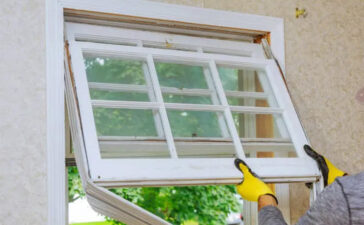Your lawn grass needs food, water, and a healthy dose of sunshine to survive. Lawn fertiliser is a formulation of nutrients that the grass needs to thrive, but cannot always find through the soil.
The extremities of the Australian climate, be it the tropical north or the dry south, can turn your lawns into marshes or barren patches if not taken care of. You can look for an appropriate lawn fertiliser at Plant Doctor to tend to your lawns according to the climate of the region you reside in.
Factors to Consider Before Buying Lawn Fertiliser
Know Your Lawn Turf Type
Some of Australia’s popular lawn turf varieties include Soft Leaf Buffalo grass, Couch grass, Kikuyu grass, Fescue grass, Bermuda grass, and Zoysia grass.
This information is essential as some turf types are best suited to particular climates. For example, Zoysia thrives in coastal areas, whereas Fescue grass works best for winter climates. The fertiliser you choose should enhance the existing trait of the grass.
Know Your Lawn Soil Type
A potential hydrogen test, commonly known as a pH test, can determine your soil’s current state and provide insights into underlying issues. You can perform a pH test on your own with the help of a pH kit, and some soil dug 4 to 6 inches from your lawn surface.
This test will check for the acidity in your soil on a scale of 0 to 14, with 5.5 to 7 being an ideal range. Soils with a score of 5.5 or less are acidic and require a formulation of all major nutrients like nitrogen, potassium, phosphorus, sulphur, and calcium. Soil with a score of above 7 is alkaline and would need sulphur and ammonium to balance its alkalinity.
For an insight into soil fertility and nutrient code, you can refer to publications from Fertilizer Australia.
Know the Nutrients Packed in Lawn Fertilisers
Lawn fertilisers are a mixture of macro and micronutrients essential for plant growth. Macronutrients that are present in larger quantities include:
- Nitrogen
- Potassium
- Phosphorous
- Calcium
- Sulfur
- Magnesium
Micronutrients, you will find mentioned as trace elements include:
- Cobalt
- Copper
- Chlorine
- Molybdenum
- Boron
- Zinc
- Iron
- Manganese

If your lawn is losing its rich green color, then nitrogen is what it needs. Potassium improves the durability of plants, makes them resistant to wear and tear, and is suitable for cold conditions. Phosphorus strengthens roots and helps maintain overall health.
When buying a lawn fertiliser at Plant Doctor, understand the nutrient composition which can best benefit your lawn.
Know When to Use Lawn Fertilisers
Early spring would be an ideal time to fertilise your lawns. After cold winters, energize your lawns by providing them with nutrient-rich fertilisers restoring the vibrancy of green to the grass.
Right after late spring feeding, the early summer months would be the right time to prepare your lawn for the harsh summers. Help your lawn breathe and grow by following a watering routine early morning as temperatures are lowest then.
Fertilising during autumn helps your lawn for the commencing cold conditions. A slow-releasing fertiliser during this time will help maintain and promote growth during the winter period, giving you a head start for healthy development during spring.
Climate, turf and soil type, nutrient composition all play a role in maintaining hearty lawns. Fertilisers should complement the environment they are used in. Thus you should take into consideration the factors mentioned above before buying a lawn fertiliser at online stores like Plant Doctor.









